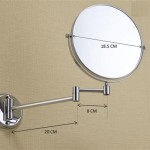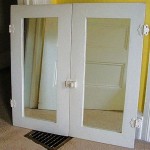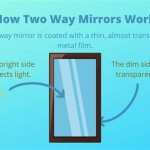How to Make Glass into an Antique Mirror
The allure of antique mirrors lies in their distinctive aged appearance, characterized by subtle imperfections and a softer reflection than modern mirrors. This effect can be replicated on new glass, allowing one to achieve the desired aesthetic without the cost and difficulty of sourcing genuine antique pieces. Several techniques can be employed, each offering varying degrees of control over the final result.
Before commencing any antiquing process, the glass surface must be thoroughly cleaned. Any grease, fingerprints, or dust particles can interfere with the application and evenness of the antiquing solutions. A thorough cleaning with glass cleaner followed by a rinse with distilled water is recommended. The glass should then be dried completely with a lint-free cloth.
One popular method involves using specialized antiquing solutions. These solutions, often available at craft stores or online retailers, contain chemicals that react with the silver backing of the mirror, causing it to tarnish and create the aged effect. It's crucial to follow the manufacturer's instructions precisely, as the concentration and application time can significantly influence the final outcome. Typically, the solution is sprayed onto the mirror surface in a light, even mist. Some solutions require multiple applications to achieve the desired level of antiquing.
Another technique involves using a mixture of hydrochloric acid and water. This method requires extreme caution due to the corrosive nature of hydrochloric acid. Proper safety equipment, including gloves, eye protection, and a respirator, is mandatory. The acid solution is carefully applied to the silver backing of the mirror using a brush or spray bottle. The reaction with the silver creates a tarnished, aged effect. The concentration of the acid solution determines the intensity of the antiquing. After the desired effect is achieved, the mirror must be thoroughly rinsed with water to neutralize the acid.
A less hazardous alternative utilizes a combination of vinegar and water. While not as potent as hydrochloric acid, vinegar can still produce an antique effect, particularly on mirrored glass with a less durable silver backing. The vinegar solution is applied similarly to the acid solution, and the reaction time will determine the level of antiquing. This method may require multiple applications or a stronger vinegar concentration to achieve significant results. Rinsing with water after application is also recommended.
Creating a speckled antique appearance can be accomplished using a combination of mirror effect spray paint and a blotted application technique. Mirror effect spray paint is readily available and provides an excellent base for the antiquing process. After applying an even coat of the mirror paint and allowing it to dry completely, a diluted mixture of black paint or a specialized antiquing paint can be applied using a sea sponge or crumpled cloth. This blotting technique creates a textured, uneven appearance, mimicking the natural aging process of antique mirrors.
For a more controlled antiquing effect, artists often utilize a combination of paint and glazing mediums. This method allows for meticulous detailing and customization. A base coat of mirror effect paint is applied first. Once dry, a thin layer of tinted glaze, typically in a darker shade, is applied over the mirror paint. The glaze is then partially removed using a cloth or brush, revealing the underlying silver or mirror paint and creating a distressed, antique appearance. Different application techniques, such as stippling or dry brushing, can produce varied textures and effects.
Beyond chemical solutions and paints, physical distressing techniques can also be employed to create an antique look. Light sanding, particularly around the edges of the mirror, can mimic wear and tear. Small scratches or chips can be intentionally added using a sharp tool. These techniques, however, require practice and precision to avoid irreversible damage to the glass. It’s recommended to practice on scrap glass before attempting these methods on the intended piece.
Regardless of the chosen method, sealing the antiqued mirror is crucial for protecting the finish and ensuring longevity. Several sealant options are available, including clear acrylic sprays and varnishes. The chosen sealant should be compatible with the antiquing method employed. Applying two or three thin coats of sealant, allowing sufficient drying time between each coat, is recommended for optimal protection.
Achieving a convincing antique mirror finish requires patience and experimentation. Starting with less aggressive methods and gradually increasing intensity allows for greater control over the final result. Testing the chosen technique on a small, inconspicuous area of the glass is always advisable before applying it to the entire surface. This precautionary step can prevent unwanted outcomes and ensure a satisfactory finished product.
The diversity of methods available for antiquing glass provides ample opportunity for creative exploration. By understanding the principles of each technique and exercising careful execution, one can transform ordinary glass into beautiful, antique-style mirrors, adding a touch of vintage charm to any space.

How To Turn Ordinary Glass Into An Antique Mirror

How To Turn Glass Into An Antique Mirror The Morris Mansion

How To Antique A Mirror Easy Diy Tutorial

How To Turn Ordinary Glass Into An Antique Mirror

How To Antique A Mirror Tutorial Jenna Sue Design

How To Antique A Mirror Tutorial Jenna Sue Design

How To Transform Glass Into A Diy Antique Mirror Eleanor Rose Home

Beautiful Easy Faux Mercury Glass Diy Mirror Tutorial This Life

How To Turn A Thrifted Picture Frame Into Mirror Sweet Southern Oaks

How To Turn Glass Into An Antique Mirror The Morris Mansion








